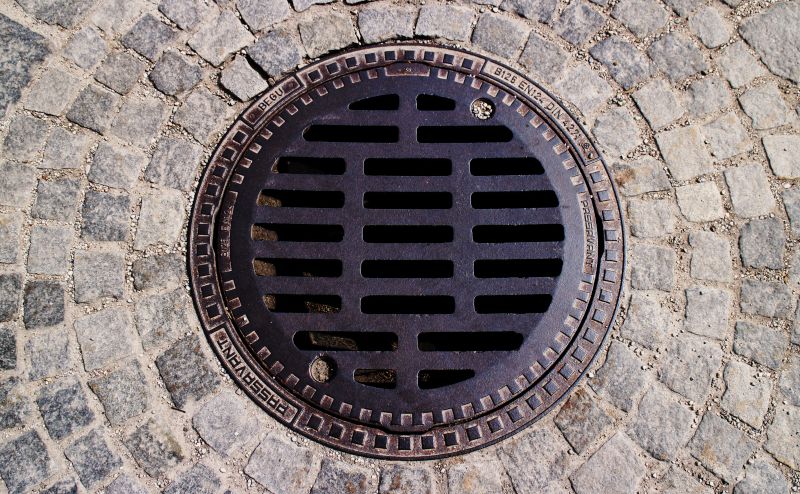6 Patio Drainage Options to Keep Your Outdoor Space Dry and Problem-Free
Though it might not be the first thing that comes to mind in your dream outdoor design, patio drainage options are a crucial part of any landscaping project—especially for hardscapes. Without proper drainage, you risk frustrating puddles, foundation damage, excessive erosion, and the disruption of your new hardscape due to freezing and thawing. Fortunately, there are several effective patio drainage options to ensure your outdoor space stays dry and protected!
Here at Allentuck Landscaping Company, drainage is a top priority as we plan out new patio projects. We plan carefully before any elements are installed to make sure water goes where it’s supposed to—and not where it shouldn’t. Here are some of the drainage options we may use as part of your new hardscape, as well as important factors to account for with your patio.
Sloping
Rule number one of good drainage is simple: water flows downhill! That means it’s crucial for your landscaping partner to understand the role of grading for drainage, assess the current slope of your property, and take steps to keep slopes directed away from your home wherever possible.
While proper sloping can’t take care of all your patio drainage, it’s a crucial part of the overall formula.
Weep Holes
Weep holes are subtle gaps or cavities left in hardscapes that allow water to enter into a drainage system. These holes are small but effective, providing an efficient way to facilitate better drainage that won’t interfere with the overall look of your patio or hardscape.
We often put this drainage feature to use
Channel Drains
Channel drains are narrow strips of drainage typically installed along the edges of hardscapes, such as patios and walkways. They allow water in through holes in the top and then channel the water to where it’s supposed to go.
Gravel Drain
Among patio drainage options, strategic use of gravel can be a very subtle method. Gravel drains are often installed as a border between your patio and other hardscapes such as walls. They serve both an aesthetic and functional purpose, breaking up the hardscape visually while creating an area for water to seep through instead of collecting on your patio.
Steps
Steps are another part of hardscaping that, while not in themselves a drainage feature, can perform very well in creating better drainage for your property. Through strategic grading, you can direct water down steps and away from your property to improve watershed.
When you work with a skilled landscaper, this will all be hardly noticeable, creating just enough drainage to improve efficiency without making your landscaping seem askew.
Downspouts
Downspouts are a key component of drainage for any landscaping projects, not just patio projects. However, with patios, disguising downspouts becomes more important as routing these drainage options over the top of your patio would be an eyesore.
Typically, patio downspouts are installed underground and are essential in directing water away from the patio, away from your home, and toward designated drainage areas.
Be Willing to Make Tweaks
Drainage can be a complicated undertaking, particularly for large patio projects. In many cases, tweaking will be required to improve drainage and ensure everything flows smoothly. Make sure the contractor you choose to work with is willing to make these necessary tweaks until drainage is optimal!
Allentuck Landscaping: We Consider All Patio Drainage Options!
These are just a few of the excellent patio drainage options available to our landscaping professionals. Here at Allentuck, we’ll use all of the options at our disposal to ensure your new patio drains in a way that doesn’t harm your patio or the rest of your property. After all, a long-lasting patio starts with efficient drainage, avoiding problems that may arise from pooling water or other drainage issues.
Are you looking to install a new patio or hardscape on your property? Or are you looking for improved drainage solutions for an existing installation? Allentuck Landscaping Company is the go-to expert for beautiful patios that function as great as they look on the surface. Contact our team today to get started with a quote!

